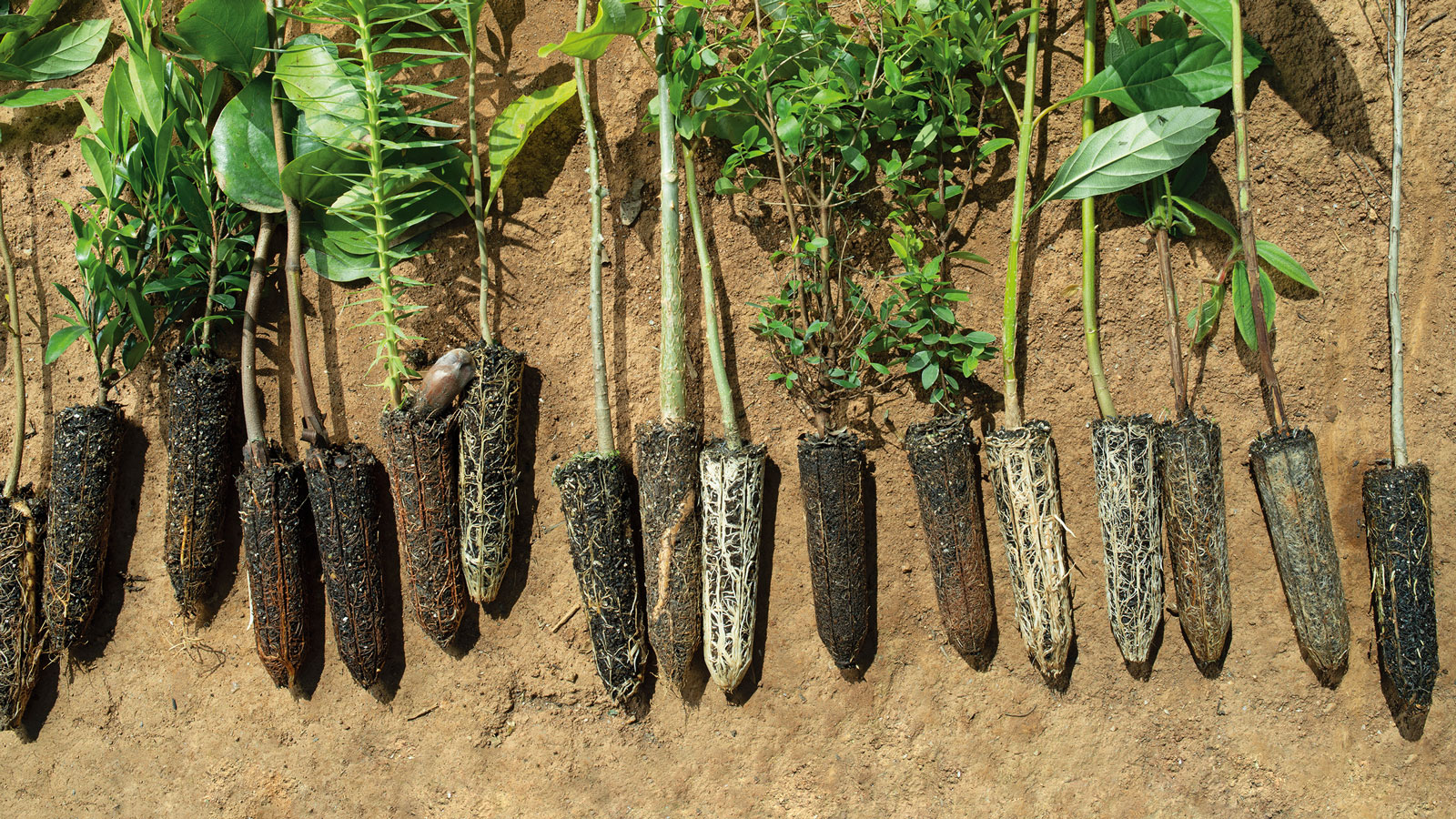Rethinking Land in the Anthropocene: from Separation to Integration
Five multiple-benefit strategies for resolving land-use competitions
In order to resolve land use competitions, policy-makers must focus on synergies. To this end, the WBGU has developed five examples of multiple-benefit strategies.
First, the WBGU recommends a massive expansion of efforts to restore terrestrial ecosystems. The target set by the Bonn Challenge of restoring 350 million hectares of degraded land worldwide by 2030 should be not only achieved, but significantly extended. The Bonn Challenge is an initiative launched by Germany and the International Union for Conservation of Nature to restore forests and forest landscapes worldwide. The focus should be on the restoration of biodiverse forests, wetlands and grasslands in appropriate locations, while simultaneously removing CO2 from the atmosphere as an additional benefit. 350 million hectares represent 2% of the Earth's land area. Yet removing CO2 from the atmosphere is no substitute for the necessary massive reduction in CO2 emissions. In climate-change-mitigation strategies, therefore, CO2 removal should not be offset against CO2 emissions reduction in an overall climate-neutrality target; rather, removal should be pursued independently.
Second, effective, interconnected protected-area systems form the backbone of ecosystem protection. The expansion and upgrading of protected areas are crucial prerequisites for defusing the global biodiversity crisis. Terrestrial protected-area systems should be extended to cover 30% of the Earth's surface, and internationally agreed quality criteria should be consistently applied. This too offers the additional benefit of contributing to climate-change mitigation and preserves long-term potential for food security.
Third, promoting diversity-based agriculture is another multiple-benefit strategy that can help bring about a global transformation of land use. For EU agricultural policy, the WBGU recommends moving away from industrial agriculture by launching a comprehensive process of ecological transformation. This promotes food security, climate-change mitigation and biodiversity conservation simultaneously.
Fourth, the transformation of dietary habits in industrialized countries, especially by reducing the proportion of animal products consumed, offers promising potential for easing the pressure on terrestrial ecosystems. Orientation towards the 'Planetary Health Diet' should become a fixed principle of nutrition guidelines and also be recommended by the German Federal Government.
Fifth, constructionusing timber offers effective ways of storing carbon in the long term. However, the timber used must come from sustainable forestry adapted to local conditions that does not threaten either biodiversity or food security. To this end, a global 'mission to promote sustainable construction' should be initiated with international partners and linked to the EU's initiative for a 'New European Bauhaus'.
Five governance strategies for the global transformation of land use
The WBGU proposes five governance strategies for implementing the global transformation of land use:
First, it recommends using new forms of multilateral cooperation, with like-minded states and/or sub-national regions creating cooperation alliances.
Second, international cooperation on land stewardship should be improved and a 'Global Land Summit' convened in the form of a joint conference of the parties to the UN conventions on climate, biodiversity and desertification.
Third, in the context of the European Green Deal, the European Union should not only strive for climate neutrality by 2050, but also target a transformation of land use towards sustainability.
Fourth, countries should create a framework for consistently pricing-in the negative impacts of land use on ecosystems or else, for example, lay down standards for containing them. Efforts to protect or restore ecosystems should be rewarded by society.
Fifth, support should be given to change agents who try out new practices in protecting and using land.
Background: terrestrial ecosystems in crisis
A stocktaking of international sustainability policy at the beginning of the 2020s makes for sobering reading. It looks like the climate protection goals of the Paris Agreement can only be reached if more areas of land are used to extract carbon dioxide from the atmosphere. This not only offers opportunities, it also involves considerable risks. The global food system is in crisis: the food security of a quarter of humanity is under threat, and another quarter suffers from unhealthy overconsumption. Furthermore, the external effects of industrial agriculture are threatening natural life-support systems. Not least, biodiversity is currently experiencing a dramatic mass extinction worldwide.
All this is happening in a situation where multilateralism is in a profound crisis and the Covid-19 pandemic is making the situation even more difficult. The scarcity of land as a public good and the no-longer-tenable conflicts over terrestrial ecosystems mean there is an urgent need for action. In this respect, the forthcoming Conference of the Parties (COP) to the Convention on Biological Diversity, the COP to the UN Framework Convention on Climate Change, and the UN Decade on Ecosystem Restoration are key forums that can give a valuable political boost to sustainable land stewardship.

